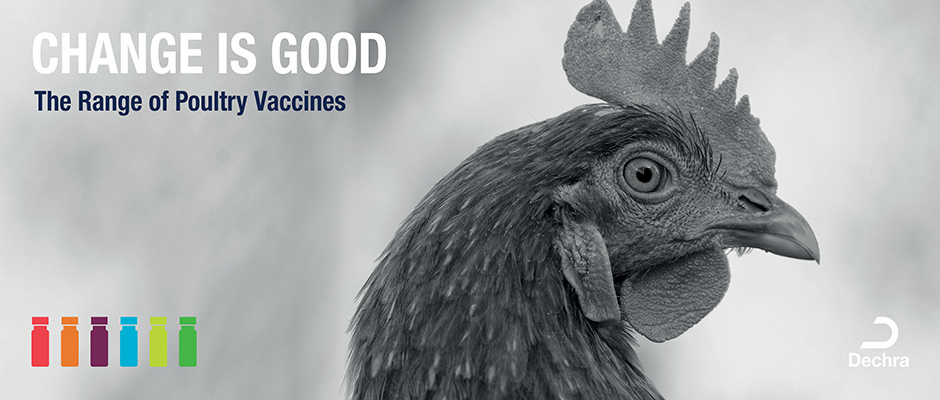-
OIE Terrestial Manual (2018), Chapter 3.3.2. – Avian Infectious Bronchitis
-
Jackwood, M.W.; deWit, J.J.: “Infectious bronchitis.” In Diseases of Poultry, 13th ed.; Blackwell Publishing: Ames, IA, USA, 2013; pp. 139–160.
-
R. A. Gallardo: “Infectious bronchitis virus variants in chickens: evolution, surveillance, control and prevention.” Austral J Vet Sci 53, 55-62 (2021)
-
Domingo, E.; Holland, J.J. “Rna virus mutations and fitness for survival.” Annu. Rev. Microbiol. (1997), 51, 151–178.
-
M. Legnardi, et al.: “Infectious Bronchitis Virus Evolution, Diagnosis and Control.” Sci. (2020), 7, 79; R.
-
F. Bande et al.: “Global distributions and strain diversity of avian infectious bronchitis virus: a review.” Animal Health Research Reviews 18(1); 70–83 (2017)
-
De Wit J.J.,et al.(2013). The required sample size in vaccination-challenge experiments with infectious bronchitis virus, a meta-analysis. Avian Pathol, 42, 9–16.
-
Valastro V, Holmes EC, Britton P, Fusaro A, Jackwood MW, Cattoli G, Monne I. S1 gene-based phylogeny of infectious bronchitis virus: An attempt to harmonize virus classification. Infect Genet Evol. 2016 Apr;39:349-364.
-
F. Bande et al.: “Global distributions and strain diversity of avian infectious bronchitis virus: a review.” Animal Health Research Reviews 18(1); 70–83 (2017)

Avian infectious bronchitis (IB)
About infectious bronchitis:
Infectious bronchitis (IB) is a highly contagious disease with a prevalence of alomst 100% worldwide. The clinical symptoms predominantly include acute respiratory disorders in growing poultry, although it may also cause an infection of the oviduct of laying hens at a young age, which can lead to severe loss in egg production and misshapen eggs. Some IB virus (IBV) strains can be nephropathogenic, causing acute nephritis, urolithiasis and mortality, especially in young birds.1,2
Economic losses for farmers can occur through:
- Respiratory disease
- Renal damages
- Increased mortality
- Reduced growth or egg production
- Reduced egg quality
- False layers
How did the IB virus (IBV) evolve over the years?:
IBV was first identified in 1931 in the USA as a respiratory disease agent that predominantly affects young chicks.3 The IBV is the causative agent of one of the most economically important diseases in modern poultry production.4
Several species of fowl have been described as potential carriers of the virus, but the primary hosts are chickens.2
Coronaviruses, being RNA viruses, are known for having a high mutation rate combined with short replication times.5 This makes the virus prone to creating new strains quickly, which also makes it difficult to tackle and control. The high diversity of the virus population to be modelled by the host, particularly by the immune system, results in the continuous emergence of new variants.6


Serotypes
To differentiate between genetic variants of IBV, serotypisation of the genetic material of the virus was established. The most prevalent serotypes within Europe are:
- D388 (QX-variant)
- UK 793B; CR88
- Mass type (e.g. H120)
- Italian-02
A newer and more precise classification system was proposed in 2016 and has been used by epidemiologists since. It is based on phylogenetic methods, describing the relationships between different strains to employ a standard nomenclature of pratical use to identify novel genetic variants.7
In general, QX-like IBV (GI-19) has been described as the most challenging serotype of IBV in Europe, followed by 793B (GI-13) and other strains (GI-1 and GI-21).7,8
How to protect flocks against IB:
Live virus vaccines have been a cost-effective solution for protection against IB for quite some time.
On a global scale, the prevalence of different IB serotypes shows strong differences between continents and regions.7 The variability of IBV requires constant monitoring for emergence of new variants in the field. Most countries also have licensed vaccines against several serotypes according to the local situation and needs.1
Vaccinations confer local immunity in the respiratory tract. Usually, vaccinations offer the strongest protection against their speciofic serotype (homologue), but suitable chosen combinations of vaccines of different serotypes may also result in wider protection against other field strains.9
Good veterinary practices including diagnosis, detection and surveillance are necessary to investigate and properly analyse the circulating IBV serotypes on a local level. This provides valuable insight to make suitable selections in vaccination schemes, ensuring optimal protection against the disease. Good husbandry practices and management and control of immunosuppressive diseases, should also be considered as part of IBV prevention.3
References add
